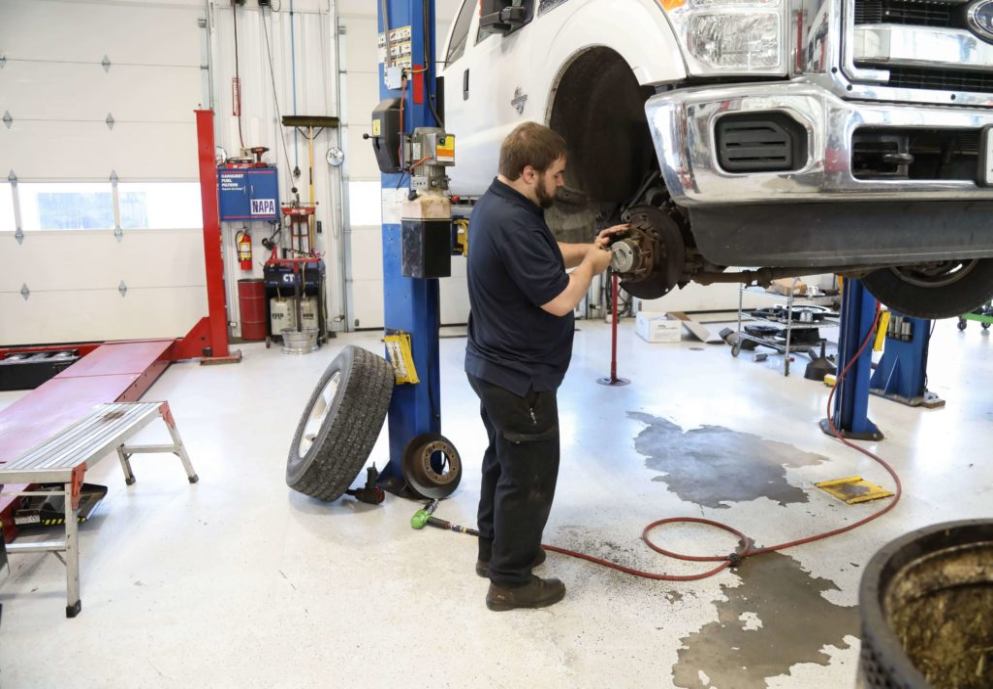Ensuring Safety in the Trucking Industry
Safety in the trucking industry is paramount. Every day, countless trucks hit the road to transport goods across the country. With so many vehicles on the move, implementing effective safety measures is crucial. These measures not only protect drivers but also ensure the safety of other road users. Let’s dive into some key strategies that trucking companies can adopt to enhance safety.
Regular Vehicle Maintenance
One of the most critical aspects of trucking safety is ensuring that all vehicles are in top condition. Regular maintenance checks can prevent potential breakdowns and accidents. This includes inspecting brakes, tires, lights, and other essential components.

Trucking companies should have a scheduled maintenance routine. This ensures that every truck is thoroughly checked before hitting the road. Moreover, drivers should be trained to perform basic inspections before starting their journey. This proactive approach can catch minor issues before they become significant problems.
Driver Training Programs
Proper training for drivers is essential. It’s not just about knowing how to drive a truck but understanding the nuances of handling such a large vehicle. Comprehensive training programs should cover defensive driving techniques, handling emergencies, and understanding road safety regulations.

Additionally, drivers should be educated about the importance of rest and avoiding fatigue. Long hours on the road can lead to tiredness, which is a significant cause of accidents. Ensuring that drivers understand the importance of taking regular breaks can make a huge difference.
Implementing Safety Technology
With advancements in technology, there are now numerous tools available to enhance trucking safety. Installing dash cams, GPS tracking, and collision avoidance systems can provide real-time data and insights. These technologies can help in monitoring driver behavior, ensuring they adhere to safety protocols.
Collision Avoidance Systems
Collision avoidance systems are particularly beneficial. They can alert drivers about potential hazards, helping them take preventive actions. This technology can significantly reduce the risk of accidents, especially in high-traffic areas.
Moreover, GPS tracking allows companies to monitor the exact location of their trucks. This ensures that drivers are on the right route and helps in planning efficient routes, reducing unnecessary detours and delays.

Ensuring Proper Load Management
Improperly loaded trucks can be a significant hazard. Ensuring that the cargo is correctly distributed and secured can prevent accidents caused by shifting loads. Overloading should be avoided at all costs, as it can affect the vehicle’s stability and braking distance.
Training for Load Management
Drivers and loaders should be trained on the best practices for load management. This includes understanding weight limits, securing cargo, and distributing weight evenly. Proper training can prevent many accidents caused by improperly loaded trucks.
Promoting a Safety Culture
Creating a culture of safety within the company is vital. When safety becomes a core value, everyone from drivers to management takes it seriously. Regular safety meetings, workshops, and discussions can keep safety at the forefront of everyone’s mind.
Encouraging Reporting
Encouraging drivers to report any safety concerns without fear of repercussions is essential. Open communication channels can help identify potential hazards before they lead to accidents. This proactive approach can make a significant difference in overall safety.
Health and Wellness Programs
Drivers’ physical and mental well-being plays a crucial role in safety. Implementing health and wellness programs can ensure that drivers are fit for the road. Regular health check-ups, fitness programs, and mental health support can go a long way in ensuring driver safety.
Addressing Fatigue
Fatigue is one of the leading causes of accidents in the trucking industry. Ensuring that drivers get adequate rest is essential. Implementing policies that limit driving hours and mandate rest breaks can prevent fatigue-related accidents.
Beyond just rest breaks, companies can explore other avenues to combat fatigue. For example, integrating wellness programs that emphasize proper nutrition and hydration can help drivers maintain their energy levels throughout their shifts. Regular exercise routines, even simple stretches or short walks during breaks, can also rejuvenate drivers, making them more alert and focused when they return to the wheel.
Emergency Preparedness
Being prepared for emergencies is crucial. Drivers should be trained on how to handle different types of emergencies, from breakdowns to accidents. Having an emergency kit in the truck, which includes first aid supplies, tools, and contact numbers, can be lifesaving.
Regular Drills
Conducting regular emergency drills can ensure that drivers are well-prepared. These drills can cover various scenarios, ensuring that drivers know exactly what to do in an emergency.
Investing in Safety Gear
Providing drivers with the necessary safety gear is essential. This includes reflective vests, helmets, gloves, and other protective equipment. Ensuring that all safety gear is in good condition and readily available can prevent injuries.
Ensuring Visibility
Visibility is crucial, especially during nighttime or in adverse weather conditions. Reflective vests and lights can ensure that the truck and driver are visible to other road users, reducing the risk of accidents.
Data Analysis and Continuous Improvement
Analyzing data from various sources can provide insights into areas that need improvement. This includes data from GPS tracking, dash cams, and incident reports. By continuously analyzing and improving safety measures, trucking companies can ensure that they are always ahead in terms of safety.
Feedback Loop
Creating a feedback loop where drivers can share their experiences and suggestions can lead to continuous improvement. This collaborative approach ensures that everyone is working towards a common goal – safety.
Ensuring safety in the trucking industry is a multifaceted approach. From regular maintenance to promoting a culture of safety, every step counts. By implementing these measures, trucking companies can ensure that their drivers, cargo, and other road users remain safe.
Moreover, companies should consider investing in advanced telematics systems. These systems can offer real-time insights into the vehicle’s performance and the driver’s behavior. They can alert management about hard braking, rapid acceleration, or other risky driving behaviors that may need to be addressed. By leveraging these technologies, companies can take a more data-driven approach to enhance safety.
Another critical aspect to consider is the role of mental health in ensuring driver safety. Long hours on the road can be isolating, leading to stress and mental fatigue. Offering drivers access to mental health resources, such as counseling services or stress management workshops, can help them cope with the demands of the job. A mentally healthy driver is more likely to be a safe driver.
In addition, fostering a community among drivers can also be beneficial. Creating platforms where drivers can connect, share experiences, and support each other can improve their overall well-being. Social connections can reduce feelings of isolation and provide a support network that enhances mental health and, consequently, safety.
Lastly, recognizing and rewarding safe driving behavior can reinforce the importance of safety within the company. Implementing incentive programs that acknowledge drivers who consistently adhere to safety protocols can motivate others to follow suit. Whether through bonuses, public recognition, or other rewards, acknowledging the efforts of safe drivers can cultivate a culture where safety is celebrated and prioritized.
In conclusion, ensuring safety in the trucking industry requires a comprehensive approach that addresses various factors from vehicle maintenance and driver training to mental health and technology. By adopting these strategies and continuously seeking ways to improve, trucking companies can create a safer environment for their drivers, cargo, and everyone who shares the road with them. Safety is not a one-time effort but an ongoing commitment that demands vigilance, adaptation, and a proactive mindset.










